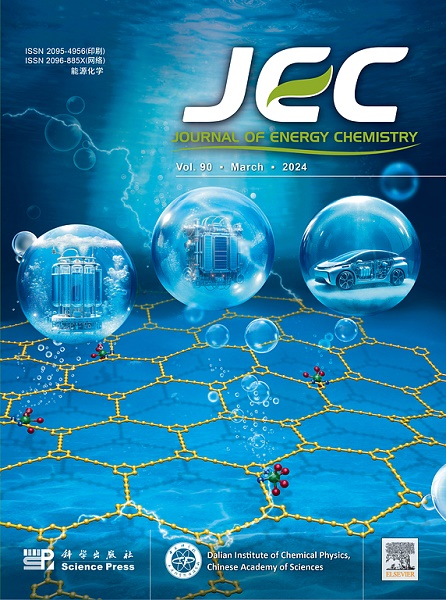Synergetic regulation of bulk reconstruction and preferential orientation realizing long-lifespan thin Li anodes for high-energy-density lithium metal batteries
IF 13.1
1区 化学
Q1 Energy
引用次数: 0
Abstract
Li plating behavior of the Li metal anode and its compatibility with electrolytes play a decisive role in the electrochemical performance of the Li metal batteries (LMBs), while the intrinsic highly reactive Li would induce serious results especially under deep Li plating/stripping depth and with lean electrolytes. Herein, we propose an innovative strategy to simultaneously regulate the bulk construction and the preferential orientation of Li deposition by introducing Li22Sn5/Li-Mg alloys to realize ultra-stable thin Li anodes with long lifespan. The alloys can form a continuous framework with high lithiophilicity and fast ion-diffusion to enable homogenous Li+ flux, and meanwhile tune the preferential orientation of Li from the conventional (1 1 0) plane to (2 0 0) to lower the Li reactivity with electrolytes and optimize Li deposition. Therefore, the thin Li-Sn-Mg alloy anode showcases ultra-stable cycling without volume changes and dendrites under a deep Li plating/stripping depth of 89.1% (5 mAh cm−2) for over 1200 h in commercial carbonate electrolytes. Moreover, a multilayered NCM811 pouch cell with a high energy density of 403.6 Wh kg−1 is achieved under the harsh conditions of low N/P ratio (0.769) and lean electrolytes (∼2.1 g Ah−1). Synchronously, the thin alloy anode shows improved air stability which benefits the manufacturing process and performance of LMBs, displaying the great application potential of these alloy anodes.

求助全文
约1分钟内获得全文
求助全文
来源期刊

Journal of Energy Chemistry
CHEMISTRY, APPLIED-CHEMISTRY, PHYSICAL
CiteScore
19.10
自引率
8.40%
发文量
3631
审稿时长
15 days
期刊介绍:
The Journal of Energy Chemistry, the official publication of Science Press and the Dalian Institute of Chemical Physics, Chinese Academy of Sciences, serves as a platform for reporting creative research and innovative applications in energy chemistry. It mainly reports on creative researches and innovative applications of chemical conversions of fossil energy, carbon dioxide, electrochemical energy and hydrogen energy, as well as the conversions of biomass and solar energy related with chemical issues to promote academic exchanges in the field of energy chemistry and to accelerate the exploration, research and development of energy science and technologies.
This journal focuses on original research papers covering various topics within energy chemistry worldwide, including:
Optimized utilization of fossil energy
Hydrogen energy
Conversion and storage of electrochemical energy
Capture, storage, and chemical conversion of carbon dioxide
Materials and nanotechnologies for energy conversion and storage
Chemistry in biomass conversion
Chemistry in the utilization of solar energy
 求助内容:
求助内容: 应助结果提醒方式:
应助结果提醒方式:


